Qat Wanders's Blog, page 3
October 31, 2017
Compassion for a Dying Snake
There is a lot of talk about compassion nowadays. Compassion for all beings. In the Buddhist tradition, compassion is a huge focal point. It is the core of everything they talk about, believe, and live their lives by. And there are so many ways that we can apply compassion in our own lives as well.
Ollivander the Snake
The other day, I was walking down the street, and I saw a snake lying across the road. I stopped to look at it because I like snakes and I thought ‘Oh my gosh, how beautiful!’ His eyes were open and he was just sitting completely still.
(I am calling the snake a “He” because he looked reasonably masculine to me, and I felt the name Ollivander suited him nicely).
My initial thought was to get him out of the road because I didn’t want him to get run over. But then I looked a little closer and realized that he had already been run over. The snake was very hurt. He had looked fine at first glance. But then, looking a little closer, I could see that his organs were oozing out of the bottom of him. He was dying slowly.
I was just completely wrought with compassion for this dying snake because I knew how much he must be suffering. Sprawled across the road like that, with all of his organs out, he was still alive! He had to experience this entire thing.
And here I am, standing in the middle of the road, with cars driving by, staring at the snake. And I just burst into tears, because the pain that I could feel for this snake was so overwhelming, all I wanted to do was take the snake’s pain away.
What Can We Do?
I stared at the snake for a little bit longer, and I did a visualization that my spiritual teacher taught me. I imagined that the snake was turning into this golden light – this glittery light – that floats up into a chosen deity (or just a chosen Divine Source or even just into the universe or the ethers – depends on what you believe). Then I just imagined that I could take all of the snake’s suffering away.
Now there’s something to be said for taking away the suffering of another being, and a lot of people are hesitant to do this type of thing because the first instinct they have is, “if I energetically take someone’s suffering away, then I’m going to suffer too, right?”
But the thing about that… you’re doing something so selfless for someone else the universe doesn’t actually let you experience pain. It’s a completely selfless act, and it can only do good things.
What We Put Out There Will Come Back to Us
When you’re doing something good, and you’re putting good out into the world; only good things come back to you. That’s the beauty of the loving-kindness (or Meta Karuna) that the Buddhists talk about. This whole principle behind compassion is a concept that is hard to wrap your mind around, but once you start practicing it, it becomes almost fun, even addictive.
You want to keep helping people, and you want to keep taking suffering away from others. I’ve actually been able to apply this to my own lifetime of dealing with chronic pain.
Although, after a long time, I have been able to actually overcome chronic pain, using a series of mindfulness, as well as muscular movement techniques. But this is one of those little things that I was taught a while ago, that has been a complete game changer for me.
I can look at something now, something that’s suffering, or someone who is suffering (and if I can, I put my hands on them, if not, I just do it visually), and I imagine pulling their suffering from them.
Let It All Go
It works when you’re the one suffering too. For instance, if you deal with chronic pain, or if you’ve had an injury, or you’re sick, just imagine that you can offer that suffering up to the universe. Offer it to the universe or whatever Divine Source that you look up to, and just offer that pain and suffering away.
Allow it to go back to the Earth, back into the universe for recycling, because that’s what the universe does. It recycles the bad and transforms it into good. But the best part is, the more good you put out there, the more compassion you put out there – the more you get back.
So even though you’re doing something like consciously trying to absorb someone else’s pain, it’s completely selfless, so you know that you are always protected.
Only good could come of this, so even when you’re suffering, you can allow that suffering to go out into the world and imagine that, by offering that suffering up, your actually alleviating the pains of others. You are lessening the pains a little bit.
Pain With a Purpose
This is even a belief in Christianity, the idea where Christ died on the cross for our sins. He got up there and suffered. He offered himself up to God, his Divine father, to completely eradicate the sins of all the rest of us. And that was just one man, so imagine if all of us were out there doing things like that!
That does not mean go out there and purposely seek pain. It does mean when you experience it you can give it a purpose. By giving a pain a purpose, our suffering will feel less pointless. We will feel less worthless.
So many of us feel like we’re suffering for no reason and it makes us feel completely hopeless. I understand because I’ve been there. I felt hopeless, useless, and I didn’t know why I was suffering. And I wondered about it out loud all the time. And when you just lay there and ask “Why?” that’s actually the ego putting it out there.
The Ego LOVES to Complain
The whining, the suffering, and the “poor me” doesn’t help anyone. Sitting around and asking “why me?” doesn’t help either because it’s the same thing as whining. All it does is it put negativity and inferiority and worthlessness out into the world. And the thing is, you get that back when you put that out there. So if we can actually stand up and really put positivity out there, it’s only going to come back to us. Over time, the suffering begins to lessen.
So after walking by and seeing this snake suffering, I was completely filled with compassion. I wished that I could take this snake’s misery away, my eyes were filled with tears. I felt ridiculous because I knew this was just a random snake I had never interacted with. But it reminded me of all the instances when I would watch my daughter suffer.
If you have a child, you know what this is like because you wish you could just take your child’s pain away, and you don’t care if it means that you’re going to experience the pain too because you would do anything for that child.
If we can get to that point with, not even just our loved ones, but random acquaintances, and even the people we dislike, then we have finally learned the fine art of compassion. I feel that this is a point Divine enlightenment (or God realization, Samadhi, Nirvana, Christ Consciousness, Oneness with the Holy Spirit – whatever you want to call it) that is when we reach that state.
Find Your Bliss
When you can actually experience that same kind of compassion for all beings, whether big or small, someone you like or dislike, and feel that kind of compassion; then you’ve truly reached a state that you can genuinely be proud of.
We are all connected. The snake is me, so of course, I suffer with it. And now, I smile because I know Ollivander is finally at peace, and his soul was never in danger.
If you liked this article you will also be interested in Saying Goodbye to a Dying Parent.
You can also watch my VIDEO about this same topic, which goes more in-depth about giving pain a purpose and join my FREE Facebook group, Overcoming Pain and Suffering.
The post Compassion for a Dying Snake appeared first on Qat Wanders- Crafting a Meaningful Life Through Mindfulness and Yoga.
September 25, 2017
Yoga For Your Gut
For those of us that have attended group Yoga classes, we are fully aware of the physical and mental benefits we walk away with. We know there are a ton of great things it can do for our body. But today I would like to talk a little bit about Yoga for the gut.
According to Yoga and ancient Chinese medicine, disease starts in the gut. So it makes perfect sense that health starts in the gut as well.
The Root of the Problem
Many digestive system issues that are plaguing our society at large are also running rampant throughout the world. These issues are the underlying cause behind a plethora of other health issues. Many of us wouldn’t even think these issues could possibly be related; such as headaches, back pain, even anxiety and skin problems.
If something doesn’t feel right deep inside your gut, that means that there is probably something that isn’t right in the rest of your life as well.
If you are suffering from one of the many different forms of digestion issues such as irritable bowel syndrome, or more severe ones, like colitis or Crohn’s, then you are fully aware that this means more than just occasional discomfort. It is usually a chronic experience of abdominal pain and digestive inconsistencies.
These unfortunate effects link to more than just the physical body. It is a mind and body relationship as well.
But There is Hope!
Yoga can make a huge difference! Not only in just reducing the stress that can cause a lot of these symptoms, but also help you apply mindfulness to your life, This will also increase your ability to listen to your body.
Digestive problems such as irritable bowel syndrome, affect a huge portion of the world. In fact, over 45 million people in the United States. And that is only what we know of it. There are many that have been suffering in silence because they are too embarrassed to talk about it.
Irritable Bowel Syndrome (IBS) usually includes bloating, gas and a rotation between constipation and diarrhea. Obviously, nobody wants to talk about that. The thing is, it is something of a mystery in the medical world because the symptoms point to an obvious problem in the digestive tract, but frequently when the digest tract is examined, there are no visible signs of damage.
The problem indicates a lack of communication between the nervous system and the digestive tract. The gut is highly responsive to changes in the body and mind on all levels. There are hundreds of millions of nerve cells constantly taking in information and sometimes they can go into overload.
When the communication between the gut and the brain (or nervous system) is somehow interrupted, it can cause one of two problems: either an over-sensitivity of the digestive tract and the nerves within it, or a complete lack of sensitivity, meaning the nerves themselves have stopped working and become unable to process the food that passes through the digestive tract.
Less Stress = Happy Gut
Another interesting tidbit of information is that people with digestive problems also tend to deal with severe anxiety. It is unknown whether the digestive problems are created by the anxiety or whether the anxiety is created by the constant worrying about the digestive problems. But alas, it is a vicious cycle.
So by decreasing the amount of stress in our lives, as well as our ability to handle stress, we can begin to heal and overcome digestive problems for good.
This is where Yoga comes in. Daily practice of the Yoga postures, alongside mindful breathing and overall mindful practices throughout the rest of life, can reduce and completely remove emotional and physical symptoms of digestive issues.
But there are certain postures and special sequences that are especially known to help. There are even sequences or kriyas that are designed to relieve abdominal and digestive discomfort specifically.
Remember to Breathe
If you can calm down your nervous system (which Yoga is famous for doing), this will, in turn, calm down the irritated digestive tract.
If you struggle in Yoga classes, then be sure not to choose postures that are too difficult, because if you can’t relax and breathe into them, you will not get the results you want.
Also, be sure to breathe steadily throughout the entire practice. Holding the breath can actually be a bad idea in some cases because it triggers your stress responses and can increase negative symptoms. It is important to get your body into relaxation mode.
So either start your Yoga practice with a relaxation or several minutes of relaxing breathing exercises. This tells your body it is time to slow down and relax.
Yoga can also help us by learning to relax in difficult positions. If a posture is particularly tiring for you, but you can learn to breathe into it and relax your body, breath, and mind, then this creates a trip wire in the brain that can eventually help you to trigger this relaxation response naturally in difficult times throughout the rest of your life as well.
This is particularly helpful in situations with chronic pain. If you can change your body’s stress triggers, you can tell your brain that your painful episode isn’t actually that bad. This can help you keep a bad situation from getting worse.
Gut Workout
Yoga can also repair the muscles and nerves in the gut. Many people do not think about the fact that the digestive tract consists of muscles the same way the rest of our body does.
If we work the muscles they get stronger and healthier. This goes for your gut as well. If the muscles or nerve endings in your intestines are causing painful and overly sensitive contractions or spasms, this can result in excess of diarrhea.
In contrast, if the muscles slow down to the point where the contractions aren’t what they need to be, this causes constipation. This is why the exercise in physical Yoga practices can help.
By applying a certain pressure to the abdomen as well as overall working out the muscles, you can condition and strengthen these muscles to function optimally.
So Where Do We Start?
This repetitive resting technique (which I introduce in my book, Yoga for YOU) can balance the contractions of the intestines and smooth everything out. Whether the body tends toward constipation or diarrhea or alternating between the two.
Needless to say, there are a ton of contributing factors to gut health. And Yoga can be applied on multiple levels. Reading into some of the best poses and sequences for digestive health is the best place to start.
Just remember, the body cannot fully heal until all of its systems are performing their best, so start from the inside and work your way out!
The post Yoga For Your Gut appeared first on Qat Wanders- Crafting a Meaningful Life Through Mindfulness and Yoga.
July 20, 2017
Have We Destroyed the Essence of Yoga?
So many people think that Yoga is just a fashion statement, or a type of exercise, or a way to make their butt look good in spandex. They want sexier, more supple bodies.
But Yoga is an ancient science that has been passed down through the ages. Yoga isn’t just intended for physical fitness; although it is a part of it. Yoga is also designed for emotional and spiritual fitness as well.
Many practitioners would agree that Yoga has been dumbed down over the centuries. It has been diluted into a spectator sport. While there are still indeed some people left whose primary goal is inner freedom and eventual enlightenment, there are still so many that are perfectly happy settling for nothing more than stronger, more flexible bodies.
Now, none of these teachings are actually lost. But we are losing sight of them at a very fast pace because Yoga cannot truly be effective until we apply it to the rest of our lives as well. And to do that we must be able to refer to and draw upon its original teachings. It’s spiritual heritage.
Many Masters have successfully brought the teachings of Yoga to the West. And the West is not the only culture that has deformed it. Many Easterners don’t know much about Yoga’s original origins either, and this includes India as well.
Although the spirituality is woven more thickly into the Eastern culture than Western, in this day and age, materialism has integrated its way into the East more and more, while spirituality is finding its way into Western cultures. The East and West are slowly beginning to find something of a middle ground. Perhaps a meeting place in between.
But Masters such as Paramahansa Yogananda (1893 to 1952 Author of Autobiography of a Yogi) went to great lengths to bring the finest teachings of this beautiful tradition when he brought Yoga to the Western Shores. He strongly emphasized the moral disciplines such as the Yamas and the Niyamas well as the other limbs of Yoga.
These consist of moral structures, such as non-harming, non-lying, non-stealing, non-promiscuity and non-covetousness. The other branches consist of principles like breathwork, meditation, and self-introspection that are all steps on the road to Enlightenment. Or liberation.
If we want to ensure a stable and thriving future for Yoga, as more than just a social movement, we must look back at its roots. Then we will be able to look forward with clarity and devotion. This can help us add to our toolkit for personal transformation. Otherwise, it will continue to be watered down until it is completely ineffective.
But there is much hope indeed! More and more people are discovering the amazing benefits that Yoga is having in all of the areas of their lives.
I have talked to individuals who have found that Yoga has made them a better parent, a better lover, a better friend. Even a better employer.
The teachings begin to work their way into the fabric of our beings. While our bodies become healthy, our minds become still and even. Therefore, our emotions become lighter and brighter. This balance inevitably leads to spiritual upliftment.
The purpose of traditional Yoga is to set us free. On a profound inner level. No matter what form, branch or style we practice, it is all based on the paramount thing called Freedom. Spiritual freedom.
Regardless of what is going on in our surroundings, Yoga tells us that we can enjoy freedom in any moment. Yoga seeks to put us in touch with the spirit, which is always free.
Although many fields of contemporary Yoga focus on nothing about inner freedom, only fitness and status and competition. Well, there is absolutely nothing wrong with a healthy body, but that is not the final objective of Yoga.
Hatha Yoga which consists of the physical postures is only one small point on the Yogic scale. Few followers know that contemporary Hatha Yoga is actually only the third limb of the eight limbs on the tree of Yoga.
Well, it is no secret that the physical postures and the breathing techniques work wonders on the physical body, and does much to improve our flexibility and strength. But if we can still practice Yoga as a mind training or a spiritual discipline, then we will be able to grow towards the eventual liberation that traditional Yoga holds up as the highest goal of human existence.
If you drop a boulder on a physically fit and healthy, flexible body, it will still break into pieces. But the soul will not be harmed. After our deaths, when our bodies are decomposing, we will have only our inner accomplishments to rely on.
Death will take us all eventually, and at that point, what will truly matter will not be our physically beautiful bodies, but the quality of our present state of mind.
In this day and age, where even spirituality is a fad, I think we need Yoga more than ever. We truly need to get back to the roots and allow the spiritual science to integrate into our lives.
If we approach it as a spiritual discipline, we will no longer have to feel as lost as a society. If we keep this in mind while we practice Yoga day after day, the transformation of our society will happen naturally. And inevitably. While we focus on slowly replacing our negative patterns of thought and behavior with new, more optimistic models, we will begin to weed out the negativity from our own minds and our own lives. It will start to follow in society and even the world as a whole.
While none of these teachings are actually lost, they have only been veiled by misconceptions. But as we begin to pull away the veil, we will reveal the external inspiration that will lead us to deep inner realization.
The shift is happening now and all of these teachings, although ancient, are here and revealing themselves once again, to allow us to ride the wave into a brand new consciousness.
May 21, 2017
Things I Learned in India – What is Overrated and What is NOT
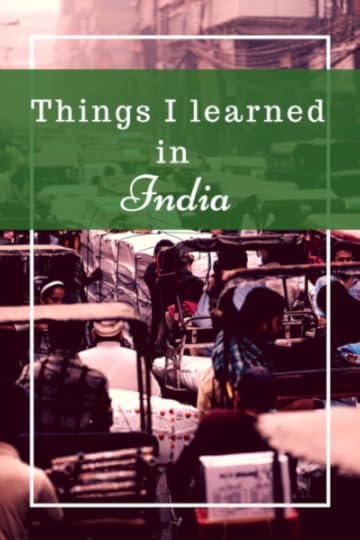
There are So Many Wonderful Lessons I Have Learned in India
India is my favorite place in the whole world, for many reasons. The colorful culture, the deep spirituality woven into the entire society, and of course the FOOD!
But out of everything I learned in India, the most important lessons all come back to the beautiful basics every time I go!
There are Just Some Things in Life That are Overrated, and Some That are NOT!
Things That ARE Overrated:
Silverware – There is something very fulfilling about sitting down on the ground and eating with your hands! I feel more connected to my food and even enjoy it more.
Air Conditioning – I have to admit, I am always amazed by how quickly I adapt to the high heat and humidity. It made me realize the body is NOT meant to go in and out of different climates on a daily basis. In fact, I had adjusted to the tropical climate so much, when I boarded the plane to leave India, the air conditioning made me so cold, I had to put on a jacket!
Toilet Paper – I never thought I would say this, but I have now deemed toilet paper completely unnecessary! I felt significantly cleaner using the Indian method of trickling water. So fresh and so clean! ?
Sweets – So it turns out, if you go without sugar long enough (and make sure the rest of your diet is well balanced), you really do stop craving it! I was staying at an Ashram (monastery) last time I was there, so the meals were very simple. But the simple food was easy to digest and always left me completely satisfied. Take that, sugar cravings!

Things That ARE NOT Overrated:
Personal Space – India would be quite the challenge for someone who is very claustrophobic! Now I am NOT claustrophobic, but I came close to a panic attack more than once from the dense crowds of people always pressed up against me. Plus the amount of pushing and shoving that is considered normal there is overwhelming, to say the least!
Simplicity – The simplicity of life I have witnessed in India was beautiful beyond explanation. Although I tend to avoid the biggest cities there where I know life is much more chaotic, most of the people I met seemed so much more carefree.
Electrolytes – Staying properly hydrated was quite the chore for me. There is not much else to say on this subject. If you are going to India, be sure to have sufficient electrolytes. My ankles looked like sausages for the first month I was there. Not fun.
Physical Affection – This was the only thing I ever felt truly starved for the entire time I was there. Even though people were always making physical contact with me in some way, physical affection was severely lacking! Hugging is not customary, and at the Ashram, the men and women were not allowed to touch at all. I found myself sometimes reaching out to touch people without even realizing it!
Using What I Have Learned in India in the Rest of My Life
In conclusion, I am not saying I go to great lengths when I return to the United States, to avoid silverware or air conditioning. But it is very nice to have been made aware that all these luxuries that so many take for granted are not actually necessary!
Quality of life has nothing to do with what we have; it is about what these things mean to us.
May 1, 2017
When We Must Say Goodbye to a Dying Parent

Accepting Inevitable Loss
Death has managed to follow me my whole life. I have lost dozens of loved ones throughout my life in all kinds of ways. Accidents, suicides, murders, and terminal illnesses.
These losses have sculpted my ability to handle grief and loss over time.
It has piqued my interest in getting to the root of emotional pain and sorrow.
By allowing myself to experience it and understand it, instead of running from it, I can cope better.
In my travels, I have said goodbye to many people for what I knew to be the last time. This is usually because I knew that I was unlikely to cross paths with them again, due to geographical differences.
I have moved around my entire life, so I cultivated relationships over and over, knowing that the end of our physical time together was just around the corner.
I have accepted this as a part of the natural ebb and flow of life.
But Now I Face a New Challenge
Last week I returned to my childhood home in California to spend time with my dying father.
I learned that no matter how much we might think we are ready for something, we never know how we will truly handle a situation until it finally occurs.
My childhood home has been a sanctuary for me throughout my life. While everything else in my life was constantly changing, I knew I could always go back and see my parents, and siblings, sleep in my old room and swim in our pool.
But now, with my father passing away, we all must learn to let go. The house will be sold, and we will all go our separate ways.
The transition is yet another element in this ever-changing physical world.
What This is Teaching Me
The more we identify with situations, the more our suffering increases.
But if we can approach a situation as a witness, we enhance our strength.
When death takes someone from us suddenly, we go through our stages of grief and try to move on. But watching a loved one suffer slowly and fade away is traumatizing in itself. Watching. Waiting. Knowing the end will come soon, but not knowing exactly when.
There is a duality of not wanting to lose our loved one, but also not wanting them to continue to suffer.
All we can do in this situation is remember that this too shall pass. Just like everything else in life.
All of the feelings of fear and worry will disappear when my dad finally takes his last breath because then I know he will ultimately be okay.
He is moving on to his next adventure, and it is only sad for those of us left behind who choose to mourn his transition.
Dealing With the Emotions
On a final note, it is so important to accept our emotional reactions. After holding my little sister while we cried for our dying parent together in our bathroom, I realized the extremely negative impact that running from our pain can have on us.
Only when we allow ourselves to really feel and experience that pain and then accept it for what it is, can we begin to heal and move forward.
April 23, 2017
5 Tried and Tested Ways to Hurt Yourself Doing Yoga
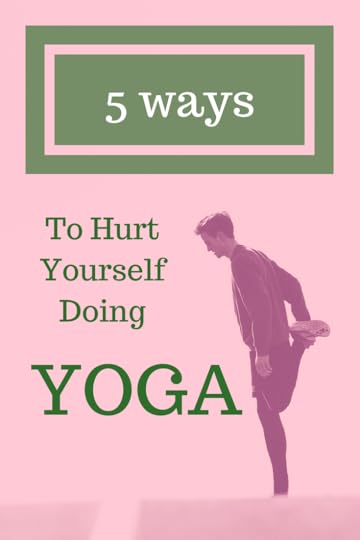
Is it Possible to Hurt Yourself Doing Yoga?
Most people are already aware that Yoga is beneficial. But not everyone thinks about the potential risk. It is most certainly possible to hurt yourself doing Yoga!
First of all, there are a ton of Yoga Myths out there. In fact, the concept of Yoga has become so distorted over the years; many people do not even know what it is anymore!
Many people think Yoga is just a form of exercise or stretching. Nothing more.
But Yoga is so much more than that.
Yoga is a spiritual science that has been passed down over thousands of years.
The physical postures that so many are familiar with today are only a small fragment of what Yoga is as a whole.
However, this part is still quite important!
The Purpose of the Physical Postures
The physical postures that we practice in a typical modern Yoga class are known as asanas, which translates from Sanskrit as a seat.
The primary purpose of practicing these asanas in a particular sequence is to prepare the body for meditation.
Over time, the body will get stronger, more flexible and more resilient to injury and disease.
But to carry out these feats, we have to do the poses in a way that suits our body.
The Right Way vs. the Wrong Way
Despite what many instructors say, there is no right or wrong way to do a pose. There are simply different ways to go about each pose for various people. Once you figure out what is right for you, you will not hurt yourself doing Yoga!
[image error]Photo Credit Dominik Wycislo
That said, we will address some tried and tested ways you CAN hurt yourself doing Yoga (I have tested some of these personally! Not fun).
1. Moving from one pose to another too quickly
Transitions are a common problem in group Yoga classes because we are trying to keep everyone else’s pace instead of our own.
Quick movements keep us from being able to focus on breath and alignment. They also make us less likely to pay full attention to our actions, making us more likely to jerk something out-of-place.
We should make every transition with intention and awareness.
2. Flowing through a sequence of postures we have not yet mastered
This concept goes along with #1, but even if we flow in and out of poses slowly, we can still do some damage if we are just repeatedly doing a posture for which we have not mastered the basics.
There are certain things we need to know about how to set up each pose. That is why we attend classes or read books. But flow classes are made up of pose sequences.
Sequencing usually involves rapid repetition of these poses. Therefore, it is assumed we already know how to do the poses in the sequence.
If we have not had the basics of each pose laid out for us, it is likely there are some things we need to improve.
What if we have a tendency to place our hands a few inches forward of our shoulders than they need to be in a push-up position? If we do that over and over again over time, it could lead to wrist strain or carpal tunnel!
3. Ignoring your breath
Always remember to breathe! It amazes me how many people forget this! Also, it is very common to hold the breathe when we are concentrating on our movements.
It is vital to breathe deep into the belly when we are holding a posture. And it is also wise to move with the exhalation, meaning breathe out as we transition between the asanas.
Paying close attention to our breath ensures that we are supplying our muscles and cells with the healthy doses of oxygen they need to work optimally and prevent strain on the heart.
If we cannot breathe comfortably and evenly, then we are doing our body a disservice.
4. Hunching your back and shoulders
Hunching or rounding is a HUGE issue for those who spend a lot of time at a desk!
So many of us slouch our way through life. Yoga can reverse this, but only if we make an effort.
If we automatically hunch our shoulders or round our back, we need to make a conscious effort to do the opposite while we are on our Yoga mat.
If we do every forward fold or twist with a rounded spine and drooping shoulders we are just making a bad habit worse.
But if we actively try to open our chest and draw our shoulder blades toward each other, this will carry over into our daily activities as well.
5. Locking the knees or elbows to hold ourselves in a pose
In some cases, locking the knee is a good thing (the instructor will tell you if it is ok). But usually, it is NOT! And never, ever lock the elbows!
Locking our joints in place will cause our blood to stagnate. It can also restrict the blood flow to the areas we need it the most for proper stabilization.
If the (qualified!) teacher says to lock the knee, go ahead and do it, otherwise, keep a micro-bend in the joints at all times.
In Conclusion
Don’t worry!
Everything on this list is easily avoidable if you just practice some self-awareness.
Although if you do not want to hurt yourself doing Yoga, do not overlook the importance of having a qualified instructor.
I recommend the Bikram sequence to those who want an overall understanding on how to handle these issues. The class directly addresses transitions, alignment, breath synchronization, joint locking, and rounding the spine, all in a hands-on way.
If we avoid letting our Yoga practice become mindless and mechanical, then this will become true for the rest of our lives as well.
April 16, 2017
Why are So Many of us Afraid of the Word Love?
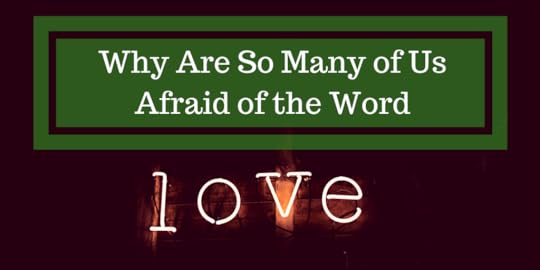
That Word Love
Some people avoid the word love like the plague. It sets off an alarm, blaring out with a resounding Get out now! Get out now!
But what makes this word so scary? It is, after all, just a word.
Many of these same people tend to use it casually all the time.
I love pizza.
Or I love that show.
Maybe I love soccer.
Or even, I love that actor…
For some reason, it is okay to use for a person when it is someone we have never even met!?
But do we actually love any of these things? And then, when it comes to telling a person that we love them; someone right in front of us, we tend to shy away from it with our tail between our legs.
This is particularly the case if this person is of any romantic or sexual interest to us at all.
Why is that?
For some of us, it is easier to say it to a family member, or even a friend. But when it comes to someone they are dating, they dance around it for weeks, months, or sometimes even years. Using phrases like I really like you, all the time. Carefully avoiding using the word love.
But the word love is only as powerful as we make it. We can make it extraordinarily powerful, and use it as much as possible to give it even more power. We can use it with friends, family, lovers, and even strangers.
 Photo by Qat Wanders
Photo by Qat WandersWhen that happens, the word can dissolve boundaries, and bring people closer.
Or we can demean the word by using it to describe our possessions, our favorite activities, foods or places. But then avoid using it in instances like romance.
When that happens, the word becomes saturated with attachments.
The term is no longer unconditional, unending or ethereal. It becomes suffocating, demanding and final.
No wonder we call it FALLING in love! So many of us have fallen and could barely get back up again. If we could somehow find a way to RISE in love instead, wouldn’t this make it more appealing? It would be uplifting instead of intimidating. What if we could love without attachment or expectation? What if we could love everyone equally, even if we only chose to love one person romantically?
Where would the world be?
April 9, 2017
Shampoo is Actually Bad for Your Hair So Consider These Alternatives

Why Do We Use Shampoo Exactly?
Have you ever thought about the hair-washing process? I mean REALLY thought about it? We scrub it with shampoo to rid it of dirt and oil. Then we condition it to…
Wait for it….
REPLACE the oil we just stripped out of it!
Along with all the other ingredients, the hair doesn’t need.
Then all these ingredients just attract more dirt to the hair, so…
Lather. Rinse, Repeat.
It’s a vicious cycle.
Now let’s take a closer look at some of those ingredients.
Ingredients commonly used in shampoo:
Ammonium lauryl sulfate – foaming agent. Can cause severe allergic reactions in larger doses.
Sodium Laureth Sulfate – water softener. Responsible for making a lather. A known carcinogen, proven irritant to the hair and scalp.
Sodium lauryl sulfate – a surfactant, detergent, and emulsifier. This is in cosmetic products, as well as in industrial cleaners, and present in nearly all shampoos, scalp treatments, and hair color. The manufacturing process is ethoxylation. The result is contamination with 1.4 dioxanes, a carcinogenic byproduct.
Phthalates – plasticine ingredients that give hair that beautiful ‘sheen.’ Also linked to congenital disabilities in the reproductive system and lower sperm motility in men. They frequently masquerade under the generic term “fragrance.”
Sodium lauroamphoacetate – cleanser and counter-irritant. Also known to clog pores.
Polysorbate 20 – surfactant and skin irritant.
Polysorbate 80 – an emulsifier.
PEG-150 stearate – thickener.
Citric Acid – antioxidant and preservative. Also a severe eye irritant.
Quaternium-15 – fungicide preservative.
Polyquaternium – conditioning ingredient.
Di-PPG-2 myreth-10 adipate – a water dispersible emollient that forms clear solutions with surfactants.
Methylisothiazolinone (MIT) – a preservative used to prevent bacteria from developing. May have harmful effects on your nervous system.
Parabens – chemicals shown to mimic the female hormone estrogen, which can drive the growth of human breast tumors.
Anything you put on your skin goes directly into your body.
Pretty disturbing right? And this is just the beginning. Most of these ingredients were never intended for human consumption.
That’s right; I said human consumption. Because when you rub something all over your scalp, it is a direct link to your bloodstream.
Although many scientists do not agree that something should be safe for ingestion if you are just putting it on your skin, there has been enough evidence to prove otherwise.
But the truth is, if you wouldn’t put something in your body, you should never put it on your body!
The sad thing is because the required labeling for these ingredients falls into a gray area, you will often find these ingredients masquerading as something else; even in products claiming natural or organic status.
I am not going to get into a full discourse on why these chemicals are there, or what potential threats they could pose. If you want to read more on that, look here.
What Kind of Problems are We Dealing With Here?
Aside from the poisonous chemicals, we are rubbing all over our scalps; this process is stripping the much-needed sebum from our hair. The body produces sebum to keep itself clean and healthy. Ironic huh?
When the oil or sebum is continually stripped from the hair follicle, the body learns that it needs to make extra oil to keep the hair healthy. This stripping results in the sebaceous glands producing too much sebum which causes a variety of hair and scalp issues.
These problems can include overproduction of cells or psoriasis, and dehydration of the skin tissue itself, usually resulting in dandruff or itchiness.
Additionally, a constant secretion of oil will attract even more dirt and an increase in bacteria. This process will also strip the skin of its vital nutrients that it needs to keep up a healthy mane.
There are only two steps necessary, and they have been much distorted over the years.
Cleansing and Conditioning
The cleansing process only needs something slightly astringent to rid the hair of bacteria and possible harmful contaminants (This is yet another reason I do not think that slathering the hair in chemicals counts as removing harmful contaminants).
The conditioning process gets the plates or scales of the hair to lay flat along the follicle. This prevents hair breakage and keeps it looking smooth and shiny.
I have suffered from Psoriasis my whole life, and I have learned from trial and error, that if I so much as even LOOK at a bottle of shampoo my scalp starts to have a flakey, itchy heyday!
Yet, I get compliments on my hair all the time.
Usually, I just say thank you and move on.
But sometimes they ask what I use to make it look so healthy.
So I tell them I use herbs and oil, instead of shampoo and conditioner.
 Photo credit Genessa Panainte
Photo credit Genessa Panainte
If they have not walked away from me at this point, the conversation usually shifts to my reasoning behind it, which is that applying any soap or detergent (which includes shampoo, even organic or baby shampoo) to the scalp is drying and horribly irritating for the skin and hair.
Sometimes people hear me out. And sometimes they don’t. The usual response is that they could never go without washing their hair because their hair would just get too greasy and disgusting.
This is only partially correct. It is true that if you have used shampoo and conditioner regularly for your entire life, and suddenly stop, your hair is going to have to go through a transition period.
I recommend slowly weaning yourself off shampoo. This will regulate the sebaceous glands and allow them to start slowing down production of oil.
If you go cold turkey, you are going to go through withdrawals!
Start going a bit longer in between hair washing, eventually getting to about once per week. You can still use conditioner if you like. Some people are advocates for baking soda and apple cider vinegar. I did this for years but eventually figured out that the baking soda was still stripping out too much oil from my hair.
Then What?
Once your hair is happy with only being washed once per week, try the herb and oil technique the following week. Then try alternating every other week.
After a couple of months, the herbs and oil are all you will need. Eventually, you will only need to do this procedure to your hair about once per month.
You can still rinse your hair as often as you like in between of course. I also like to spray mine with a mix of witch-hazel (because it is not over-drying) and rosemary tea (because it cleanses and stimulates hair growth) a couple of times per week to keep it smelling fresh.
I also occasionally do a sea salt scrub, and apple cider vinegar rinses depending on the time of year.
The traditional Indian Ayurvedic technique for hair cleansing uses herbs such as Amla and Brahmi, and oils such as sesame and Bhringaraj. This method is still the norm in India today. Keep in mind there is plenty of regular soap there today. But many Indians still prefer to take care of their hair the natural way. And there is a lot of beautiful hair in India!
If you want to know more about the herbs and oil technique, check out this page full of amazing products and suggestions.
Conclusion
The point is, hair care has been around forever, but chemical-laden shampoos and other hair products have not. Try giving your hair a break it deserves. Lay off the poison. Nourish it with vibrant, healthy nutrients, and it will reward you with luxurious locks that will be the envy of everyone you meet!
Sources Cited:
http://sulfatefreeshampoos.org/why-are-sulfates-bad-for-hair/
http://thehairpin.com/2011/04/how-to-quit-shampoo-without-becoming-disgusting
April 2, 2017
You Know You are in India When:
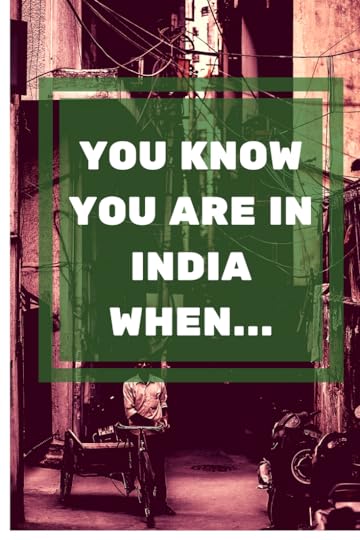
You aren’t sure if the creäture that just ran over your foot was a giant chipmunk or a baby monkey.
For some reason, the chipmunks in India are gargantuan. You see them all the time, and they have no problem approaching people. It is the same with monkeys. The crowds don’t bother them at all because they are accustomed to getting food that way.
A bird poops on your head, and everyone claps and congratulates you for your good fortune.
Apparently, being pooped on by a bird is a good omen, especially if it is on your head. People are often blessed with good omens in India because there are so many birds flying around the crowds!
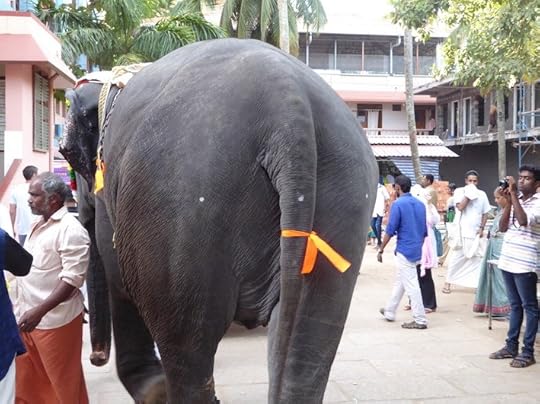
You pass an elephant on your way to the toilet that is wearing more elegant clothing then you are.
Elephants are somewhat common pets in India. They appear all the time in parades, religious ceremonies, funerals, and weddings. And of course, they have dressed appropriately for the occasion!
You attend three weddings and a funeral in one day. The atmosphere at all three of them is equally happy.
Indians know how to celebrate. Singing. Dancing. Chanting. Weddings are a cause to celebrate new beginnings. Funerals are a cause to celebrate life. Even the cremation is a cause to celebrate the releasing of the Soul. There is a lot to learn from these beautiful ceremonies.
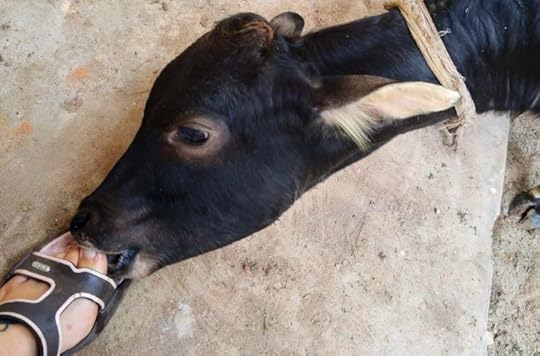
You get your muddy feet licked clean by a random baby cow.
Cows are everywhere in India! And so is mud. Cows roam the streets freely, and they are sacred in this culture. It is not abnormal to see a cow holding up traffic in the middle of the road. Or even wearing fine jewelry or a garland of beautiful flowers around their necks.

You see two men walking down the street together holding hands and don’t automatically assume they are sleeping together.
This is pretty standard in India. You don’t see much physical affection between men and women. It is somewhat taboo. But throwing your arm around your best buddy while you take a stroll down the street together is perfectly normal!
You find yourself waggling your head at everyone you see.
You might have heard of the famous Indian Head Wobble. It is a delightful habit of wiggling your head from side to side. It replaces nodding your head in the western culture. But it also implies the person is listening to you, or just saying hello, thank you, or you’re welcome.
Happy Roaming!
March 26, 2017
Finding True Freedom in All Areas of Our Lives
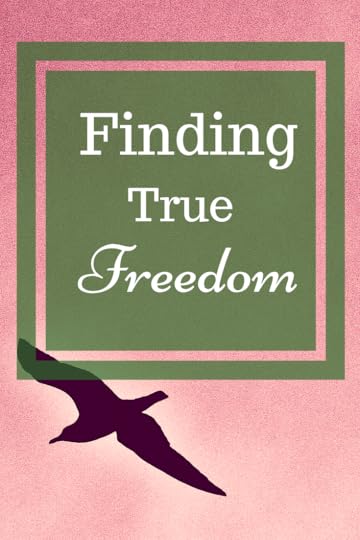
Many people tend to think that freedom means being able to do whatever they want.
True freedom is being able to accept and transcend whatever life brings to the table.
Many people who have more than all the necessities become very depressed. And there are those who buy whatever they want, eat whatever they want, and go wherever they want. They are always searching the far ends of the world for new experiences but still find that they are not happy.
In fact, it is because of these things that they have done and obtained, that they are not happy. Because even after doing all these things, they haven’t found true fulfillment, which is very depressing.
However, there are some who have hardly anything, have stayed in one place their entire lives, and are full of compassion and love for others. They lead simple, modest lives that are full of meaning.
This state of freedom is within reach. We just have to choose to reach out for it. It is like the sun. It is always there, radiating its beautiful gleaming rays. It is there when it is cloudy, rainy or nighttime – it’s just not as visible to us at those times.
But if we remember to search for it, in all of life’s circumstances; slowly but surely, it will become more visible to us.
[image error]Photo by Qat Wanders
We can begin to feel it, the way we would feel the heat of the sun’s rays on our skin. Eventually, we can feel it deep within, and understand that if we can let it go deep enough, it eventually surpasses all connection to the physical body.
This existence deep inside has nothing to do with what we do or what we have.
When we surpass that physical connection and find the light everywhere, then we have begun our paths on a genuinely spiritual life.
Only then can we find true freedom.
A freedom that money, fame, or power could never buy or even imitate.
Freedom from attachments.
Freedom from desire.
One who remains rooted in desire is never truly free.
Most suffering in life is due to our minds. We cling desperately to the experiences and actions that we have accumulated. And we use this created identity to define our world.
Some get so caught up in ‘me and my story’ that they become slaves to it.
But one who can let go of desire, and replace it with the ability to find that light shining deep within all circumstances, knows freedom in its most authentic form.
They know that their story isn’t more important than anyone else’s. They know it doesn’t define who they are, or what they can become.
That is true freedom.
Qat Wanders's Blog
- Qat Wanders's profile
- 19 followers



